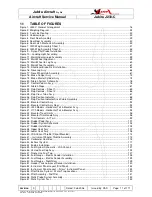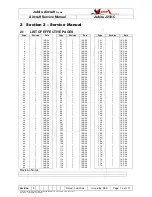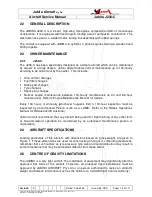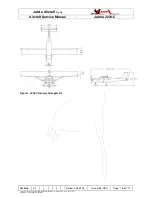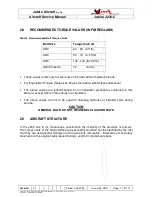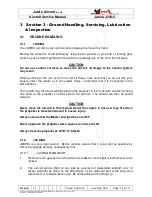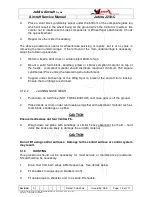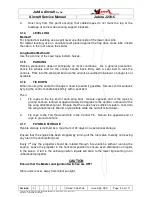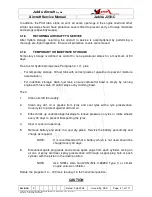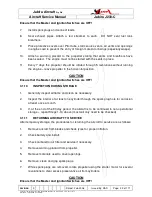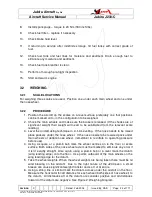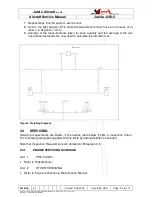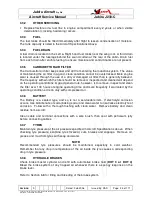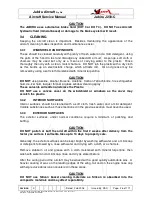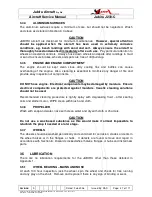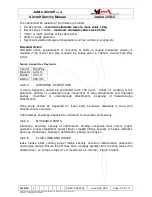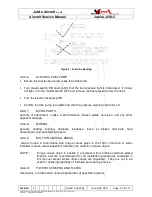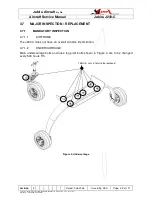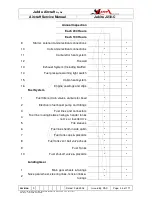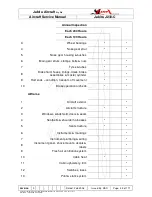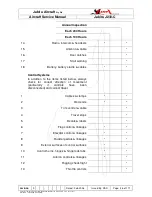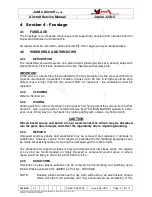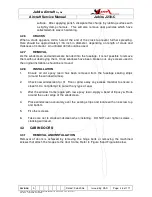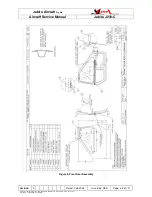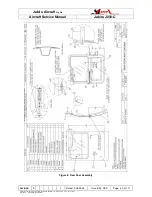
Jabiru Aircraft
Pty Ptd
Aircraft Service Manual
Jabiru J230-C
REVISION
0
Dated : Feb 2006
Issued By: RAS
Page: 25 of 171
L:\files\Technical_manuals\J230_J430\J230.J430_Work_files\J230-C_Tech_Rev_1.doc
Print Date: 14/01/2009 4:41:00 PM
3.3.2
OTHER SERVICING
•
Replace flexible oil & fuel line in engine compartment every 2 years or when visible
deterioration (cracking, hardening) occurs.
3.3.3
FUEL
The fuel tanks should be filled immediately after flight to lessen condensation of moisture.
The tank capacity is listed in the Aircraft Specifications Above.
3.3.4
FUEL DRAIN
A fuel drain is located in the Left & Right hand fuel tanks near the wing root. A third drain
is located under the fuselage behind the sound curtain at the rear of the cabin. Drain fuel
from each drain after each refueling to ensure moisture and contaminants are not present.
3.3.5
CARBURETTOR AIR FILTER
The Carburettor air filter keeps dust and dirt from entering the induction system. The value
of maintaining the air filter in a good, clean condition cannot be overstressed. More engine
wear is caused through the use of a dirty or damaged air filter than is generally believed.
The frequency with which the filter should be removed, inspected and cleaned will depend
on the operating conditions. A good general rule, however, is to remove, inspect and clean
the filter ever 100 hours of engine operating time and more frequently if warranted by the
operating conditions. Clean only with compressed air.
3.3.6
BATTERY
The Battery is a sealed type, and so is not a serviceable item. If electrolyte corrosion
occurs, Use bicarbonate of soda (baking soda) and clean water to neutralise electrolyte of
corrosion. Follow with a thorough flushing with clean water. Remove battery and clean
residue from aircraft.
Clean cable and terminal connections with a wire brush, then coat with petroleum jelly
before connecting cables.
3.3.7
TYRES
Maintain tyre pressure at the air pressure specified in Aircraft Specifications above. When
checking tyre pressure, examine tyres for wear, cuts, bruises and slippage. Remove oil,
grease and mud from tyres with soap and water.
NOTE:
Recommended tyre pressures should be maintained, especially in cold weather.
Remember that any drop in temperature of the air inside the tyre causes a corresponding
drop in tyre pressure.
3.3.8
HYDRAULIC BRAKES
Check brake master cylinder and refill with automotive brake fluid
(DOT 3 or DOT 4)
Bleed the brake system of any trapped air whenever there is a spongy response on the
brake lever.
Refer to Section 6.8 for filling and bleeding of the brake system.

